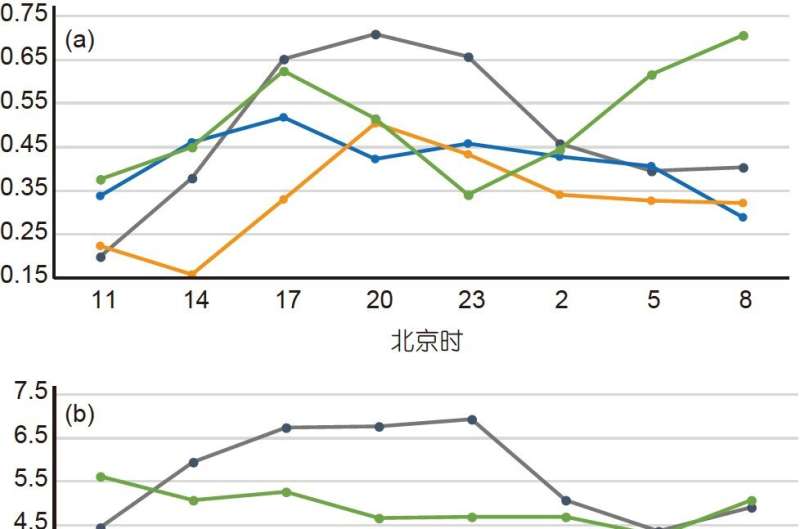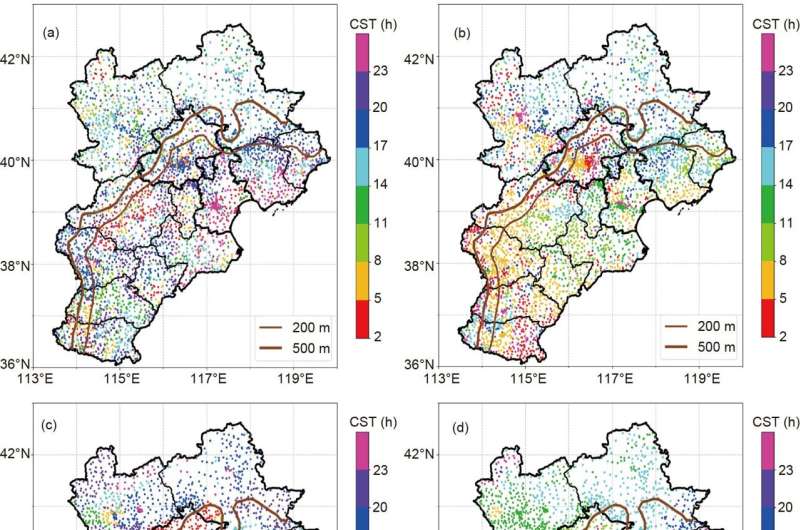Multi-model forecast biases of the diurnal variations of intense rainfall in the Beijing-Tianjin-Hebei region

In a study led by Prof. Qi Zhong (China Meteorological Administration Training Center), Dr. Haoming Chen (Chinese Academy of Meteorological Sciences), and Meteorologist Zhuo Sun, Jiangbo Li, Lili Shen of Hebei Meteorological Observatory, intense rainfall events in the Beijing-Tianjin-Hebei region (BTHR) were categorized into two types: those mainly due to strong synoptic forcings (SSF) and those with weak synoptic forcings (WSF).
The common biases showed that the numerical forecasts tend to overestimate the frequency of intense rainfall events but underestimate the rainfall intensity. Of these, the overestimation of precipitation frequency mainly appeared in the mountainous areas in the afternoon.
Although the high-resolution mesoscale models showed a notable improvement in forecasting the afternoon intense rainfall compared with global models, they all have an obvious bias in forecasting the nighttime rainfall. For the WSF type, both the global model and mesoscale model have a low forecast skill, with large biases in the sub-daily propagation feature. The possible causes are related to a poor performance of the model in reproducing the local thermodynamic circulations and the dynamical processes in the planetary boundary layer.
The research was published in Science China Earth Sciences.

More information: Qi Zhong et al, Multi model forecast biases of the diurnal variations of intense rainfall in the Beijing-Tianjin-Hebei region, Science China Earth Sciences (2022).
Journal information: Science China Earth Sciences
Provided by Science China Press



















